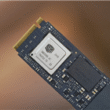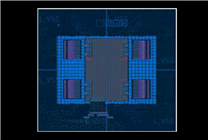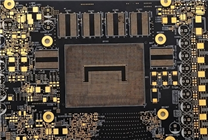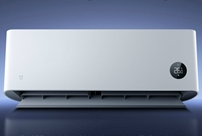Japan’s Pioneering Step into AI Supercomputing: The FugakuNEXT Initiative
Summary:
- Japan plans to develop the FugakuNEXT supercomputer, boasting 100 times the performance of its predecessor, by 2030.
- Pezy Computing is at the forefront of creating high-performance AI chips, aiming to compete with established giants like NVIDIA.
- The upcoming Pezy chips promise significant advancements in performance, utilizing cutting-edge semiconductor technology.
As countries vie for dominance in the rapidly evolving landscape of artificial intelligence, Japan is set to make a bold leap forward with the development of FugakuNEXT, a next-generation Z-class AI supercomputer. This groundbreaking project aims to achieve a staggering 100-fold increase in computing power by 2030, primarily leveraging NVIDIA’s next-generation GPUs. However, Japan is keenly aware of the competitive landscape and the risks associated with dependence on foreign technology.
The Quest for Independence in AI Technology
To bridge the gap in high-tech advancements, Japan is strategically investing in the development of its own AI chips, while still incorporating NVIDIA’s cutting-edge graphics processors. This dual approach will bolster Japan’s position in the global AI race and mitigate the risks associated with relying solely on external technology providers. The country’s focus on innovation drives efforts to create acceleration chips that can rival NVIDIA in performance, tailored specifically for high-precision computations.
Pezy Computing: Leading the Charge
An important player in this initiative is Pezy Computing, a company backed by Japan’s New Energy and Industrial Technology Development Organization (NEDO). Pezy has made significant strides in chip development since launching its first-generation chip in 2012. The latest evolution, the Pezy-SC4 series, was unveiled at the Hotchips 25 conference and is expected to officially launch next year.
The Pezy-SC4 chip showcases impressive specifications, using TSMC’s 5nm process technology, featuring a die area of 555.7 mm², 4.8 billion transistors, 2048 cores operating at a frequency of 1.5GHz, and a substantial 96GB of HBM3 memory, all while maintaining a power consumption of 600W. Its peak performance metrics are striking, with FP64 performance hitting 24.6 TFLOPS, FP32 at 49.2 TFLOPS, and FP16 further escalating to 98.4 TFLOPS.
Advancements on the Horizon
Looking ahead, the next generation, Pezy-SC5, promises to take performance to new heights with advancements that include TSMC’s 3nm process, an expanded area of 785 mm², and an impressive increase to 10 billion transistors. This version will feature 4096 cores and expand memory capacity to 192GB HBM3e, with total power consumption estimated at 900W. With FP8 support, Pezy-SC5 is set to achieve an astounding peak performance of 329.6 TFLOPS, fully geared to meet the demands of contemporary AI applications.
Performance Comparisons with NVIDIA
When analyzing energy efficiency metrics, the performance of Pezy chips stands competitively alongside NVIDIA’s advanced GPUs. The FP64 energy efficiency of the Pezy-SC3 and SC4 models are measured at 41.9 and 41 GFLOPS/W, respectively, while the SC5 advances to 45.8 GFLOPS/W. By comparison, NVIDIA’s H200 GPU shows an FP64 energy efficiency of 47.9 GFLOPS/W, while the B200 and B300 cards deliver disappointing figures of 33.3 and 0.89 GFLOPS/W, respectively, with the latter being tailored more for AI computational tasks.
Clearly, Pezy’s chip advancements offer performance levels nearing NVIDIA’s flagship GPUs while not compromising on high-precision computing capabilities across formats from FP64 to FP8, highlighting their potential superiority in specific applications.
The Future of AI in Japan
With these developments, Japan is solidifying its presence in the AI field amid fierce global competition. The ability to produce high-performance AI chips internally will not only foster independence from foreign technology but also position Japan as a critical player in the future of AI infrastructure. The FugakuNEXT supercomputer and the cutting-edge Pezy chipsets signify a transformative period for Japanese technology, where innovation, efficiency, and performance converge to pave the way for next-generation supercomputing solutions.
As Japan gears up for this ambitious journey, the implications for AI research, industry applications, and global competitiveness are profound. Japan is not merely keeping pace with technological advancements; it is setting the stage for an era of unparalleled progress in artificial intelligence.
By strategically investing in AI technology and fostering local chip development, Japan is poised to enhance its global standing in the quest for advanced computing capabilities, ensuring that it remains at the forefront of the technological revolution.








